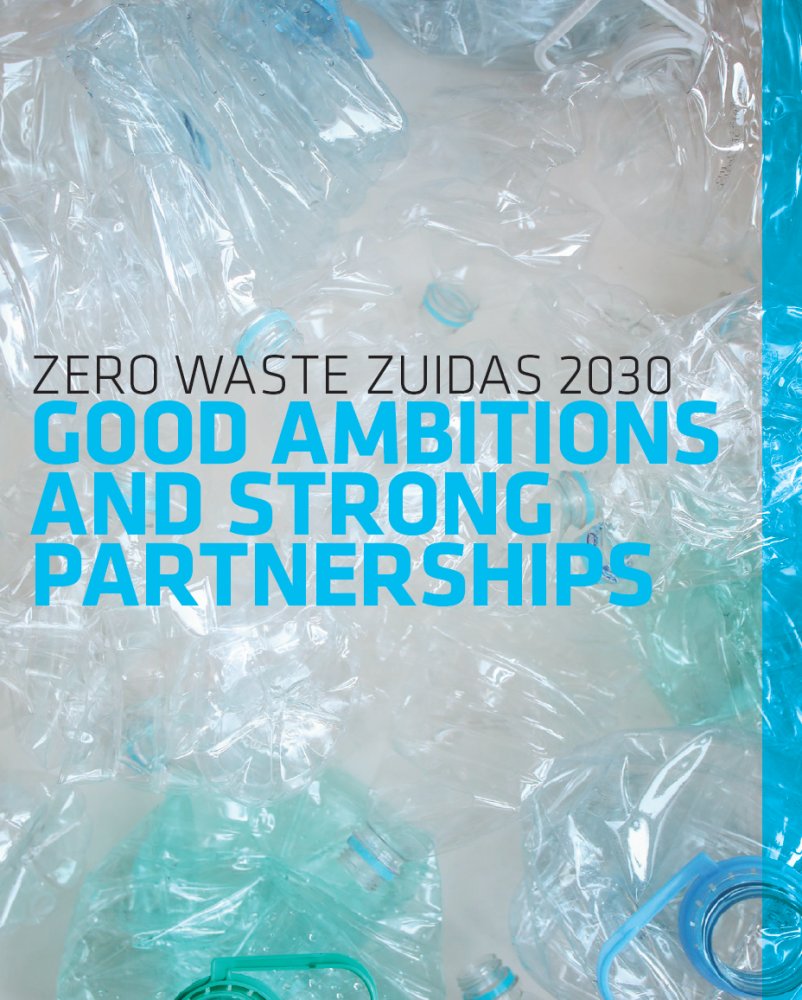ZERO WASTE ZUIDAS 2030 GOOD AMBITIONS AND STRONG PARTNERSHIPS
A clean, circular Zuidas where every waste product is the beginning of something new: this is the clear-cut ambition of Zero Waste Zuidas 2030. Spearheaded by Green Business Club Zuidas, the programme is getting a boost over the next two years thanks to support from the City of Amsterdam – making this a good time for an interview with its project manager, Nina van den Berg. “We are thrilled to be able to scale up the Zero Waste Zuidas programme. We have some strong partnerships with companies, property owners and waste management services already and now we can start building on that.”
Raising awareness
Zero Waste is a term we’ve seen a lot lately. For members of Green Business Club Zuidas, the first facet is cutting waste. “What can’t be eliminated is carefully sorted and processed to the highest standards, preferably regionally”, Van den Berg explains. Awareness about Zero Waste is growing, and so is interest among employers, employees and property owners to get involved. Zero Waste Zuidas is a new, integral programme with a role for everyone, from organizations both big and small to tenants of multitenant buildings and individual building managers. It spans four sub-projects, focusing respectively on purchasing, waste separation, logistics, and waste processing.
Aligning purchasing and processing
Zero Waste is inextricably linked with circular purchasing. According to the project manager, “In many cases, purchasing and processing are not aligned in many cases, and the physical distance from suppliers tends not to be a factor when making choices.” The purchasing sub-project aims to have twenty organizations complete circular procurement training and to set up framework contracts in a number of product categories, keyed to waste reduction and high-quality end-of-life processing. “PHI Factory is developing a ‘Circular Purchasing Accelerator’ as an online learning platform for purchasing professionals. We have 55 participants already, but there is room for more, so consider yourself invited!”, says Van den Berg.
Waste separation data
Many organizations are already separating their waste, but have no insight into their own data. Multitenant buildings tend to have only generic information, not data pertaining to individual tenants. “We are seeing quite a lot of recyclable material in waste flows. Our Waste Labs are increasing awareness about this through organizational waste analyses, which have been really enlightening”, Van den Berg says, looking back on the past year. Other objectives in this sub-project centre on separation at source and uniform quarterly reporting.

Collection and logistics
At present, waste collectors are coming through the district several times a week, are not avoiding rush hours and for the most part are still fossil-fuelled. Van den Berg: “The first step to reaching our objectives for this sub-project is to collect outside rush hours and combine collection days. We are also looking to tie in with Oscar Circulair at the Olympic Stadium and exploring other hub locations that could be used as transloading and small-scale processing points.”
High-quality processing as standard
Lastly, the programme also includes a component targeting the processing of hot waste. “There is still a lot of ambiguity for end users about where and how waste flows are processed. A great deal of waste needlessly winds up in residual waste and gets incinerated. At the same time, mono flows (such as paper) may not be pure enough for high-quality processing. The importance of pure flows is underestimated by discarders”, Van den Berg notes in closing.
